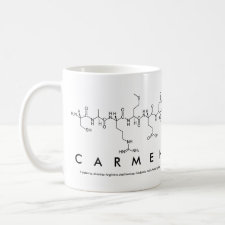
Authors: Lorenzo RA, Carro AM, Alvarez-Lorenzo C, Concheiro A
Article Title: To Remove or Not to Remove? The Challenge of Extracting the Template to Make the Cavities Available in Molecularly Imprinted Polymers (MIPs).
Publication date: 2011
Journal: International Journal of Molecular Sciences
Volume: 12
Issue: (7)
Page numbers: 4327-4347.
DOI: 10.3390/ijms12074327
Abstract: Template removal is a critical step in the preparation of most molecularly imprinted polymers (MIPs). The polymer network itself and the affinity of the imprinted cavities for the template make its removal hard. If there are remaining template molecules in the MIPs, less cavities will be available for rebinding, which decreases efficiency. Furthermore, if template bleeding occurs during analytical applications, errors will arise. Despite the relevance to the MIPs performance, template removal has received scarce attention and is currently the least cost-effective step of the MIP development. Attempts to reach complete template removal may involve the use of too drastic conditions in conventional extraction techniques, resulting in the damage or the collapse of the imprinted cavities. Advances in the extraction techniques in the last decade may provide optimized tools. The aim of this review is to analyze the available data on the efficiency of diverse extraction techniques for template removal, paying attention not only to the removal yield but also to MIPs performance. Such an analysis is expected to be useful for opening a way to rational approaches for template removal (minimizing the costs of solvents and time) instead of the current trial-and-error methods.
Template and target information: Review - MIPs and template removal
Author keywords: molecularly imprinted polymer (MIP), Template removal, solvent extraction, physically-assisted extraction, Ultrasound-assisted extraction, microwave-assisted extraction, pressurized-liquid extraction, subcritical water extraction, supercritical fluids extraction



Join the Society for Molecular Imprinting

New items RSS feed
Sign-up for e-mail updates:
Choose between receiving an occasional newsletter or more frequent e-mail alerts.
Click here to go to the sign-up page.
Is your name elemental or peptidic? Enter your name and find out by clicking either of the buttons below!
Other products you may like:
 MIPdatabase
MIPdatabase









